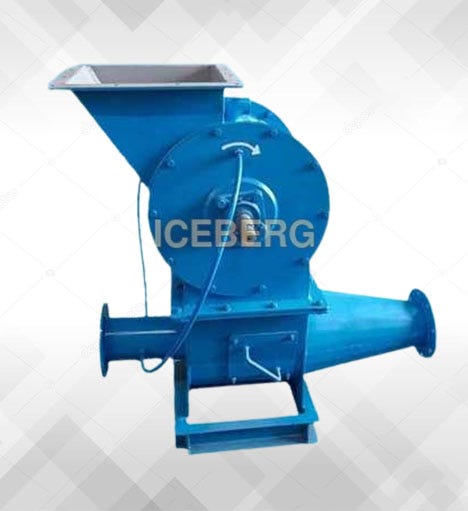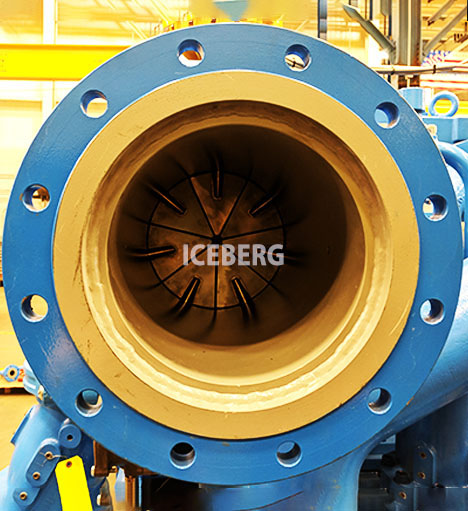Pneumatic Husk Conveying System: Revolutionizing Material Handling
In today’s fast-paced industrial environment, efficient material handling is crucial for the smooth operation of various processes. One technology that has revolutionized material handling is the pneumatic husk conveying system. Design and develop by Multivent Engineers, this advanc system offers numerous benefits and ensures seamless transfer of husk and other materials. In this article, we will explore the features, advantages, and applications of the pneumatic husk conveying system, as well as provide insights into choosing the right system for your specific needs.

What Is a Pneumatic Husk Conveying System?
A pneumatic husk conveying system is a sophisticated solution that utilizes air pressure to transport husk and similar materials within industrial facilities. It takes the place of conventional mechanical or manual methods of handling husk, improving efficiency and lowering the possibility of human error. The system enables the smooth transfer of husk from one point to another by using a network of pipes, fans, and control systems, permitting a continuous process and increasing production.
Benefits of Using a Pneumatic Husk Conveying System
Implementing a pneumatic husk conveying system in your facility can yield several significant advantages. These benefits include:
Improve Efficiency: The system automates the material handling process, eliminating the need for manual labor and reducing time-consuming tasks. This results in increased efficiency and productivity.
Reduced Labor Costs: With the pneumatic husk conveying system handling the transportation of husk, the dependency on manual labor decreases. This can lead to cost savings by minimizing labor expenses and reallocating resources to other areas of the operation.
How Does a Pneumatic Husk Conveying System Work?
An air stream or pressure gradient is fundamentally how a pneumatic husk conveying system moves husk particles via a set of pipes. To create the necessary air pressure, which moves the husk particles forward, the device uses a blower or fan. The husk enters the system by an input and is then transported through the pipes to the desired location, such as a storage silo or processing unit, where it is stored or processed.
To maintain optimal airflow and prevent clogging, the system incorporates filters and separators to remove impurities and ensure the smooth movement of husk. The control mechanisms, such as valves and sensors, regulate the flow of husk and enable precise control over the entire conveying process.
Key Components of a Pneumatic Husk Conveying System
A pneumatic husk conveying system comprises several essential components that work together to ensure reliable and efficient material handling. These components include:
Inlet: The point of entry for the husk into the conveying system, usually equipped with devices to regulate the flow and prevent backflow.
Blower or Fan: Generates the necessary air pressure to propel the husk particles through the system.
Choosing the Right Pneumatic Husk Conveying System
When selecting a pneumatic husk conveying system for your specific needs, several factors should be considered:
Material Characteristics: Consider the characteristics of the husk or material you must transport, such as its density, moisture content, and particle size. The right system design and component specifications can be determined with the aid of this information.
Minimum Capacity: Establish the volume and distance requirements for the intended conveying capacity. As a result, the efficiency of the selected system will be guaranteed to handle the anticipated material flow.
By carefully considering these factors, you can choose the right pneumatic husk conveying system that meets your operational needs and maximizes efficiency.
FAQs
What are the advantages of pneumatic husk conveying systems?
A: Pneumatic husk conveying systems offer improve efficiency, reduce labor costs, enhance safety, precise material control, space optimization, and flexibility in handling different material volumes and layouts.
How efficient are pneumatic husk conveying systems?
A: Pneumatic husk conveying systems are highly efficient as they automate material handling, minimize human error, and optimize productivity by ensuring continuous workflow.
Conclusion
The Multivent Engineers-developed pneumatic husk conveying system has completely changed how materials are handled in a variety of industries. This technology delivers increased productivity, lower labour costs, improved safety, and precise material management by utilising the power of air pressure. With its numerous uses and adaptability, the pneumatic husk conveying system has emerged as a crucial tool for effective material handling in contemporary industrial settings. You may streamline your material handling procedures and maintain an edge in the current competitive environment by taking into account the unique needs of your company and choosing the appropriate system.


Comments
Post a Comment